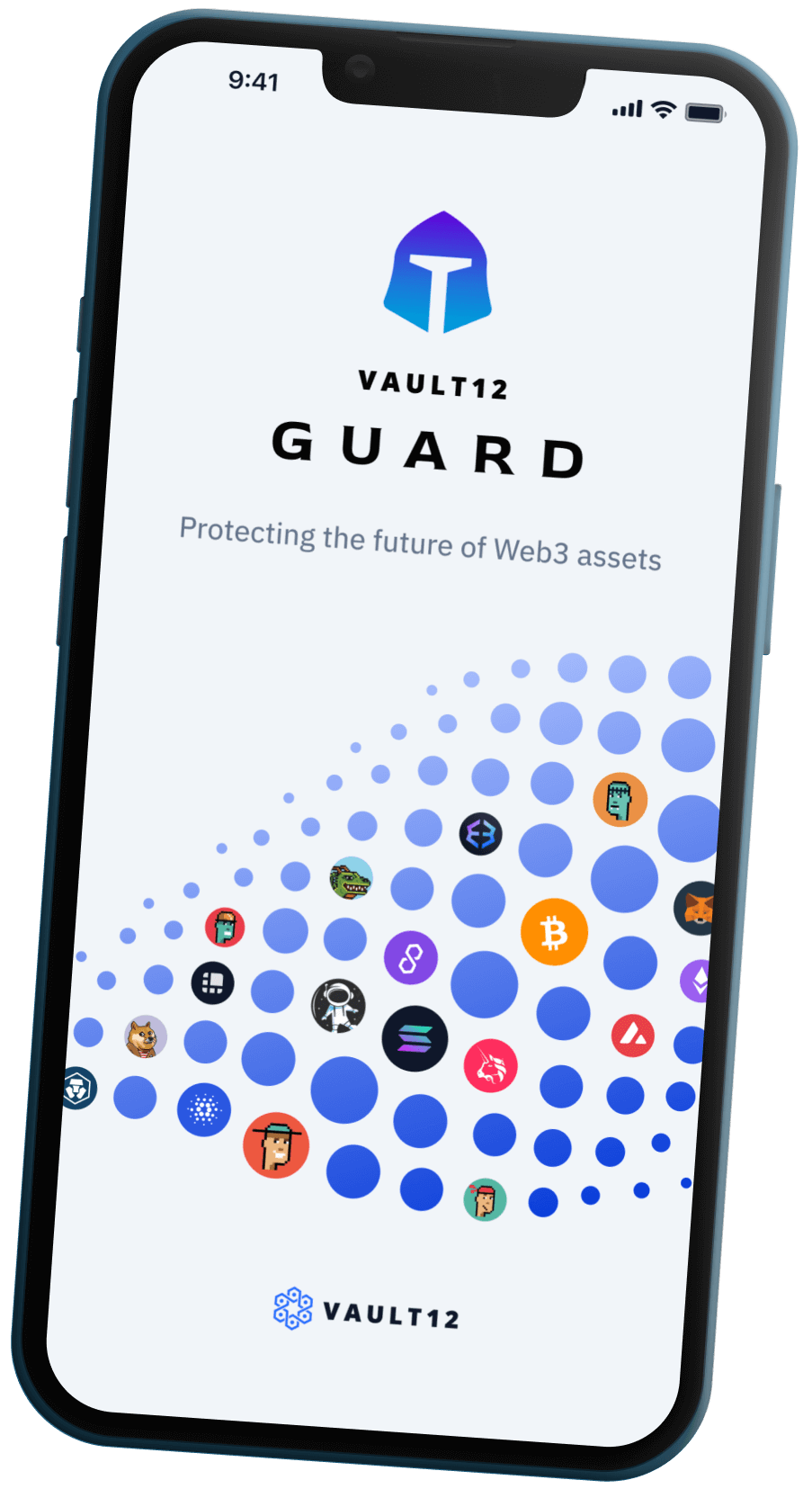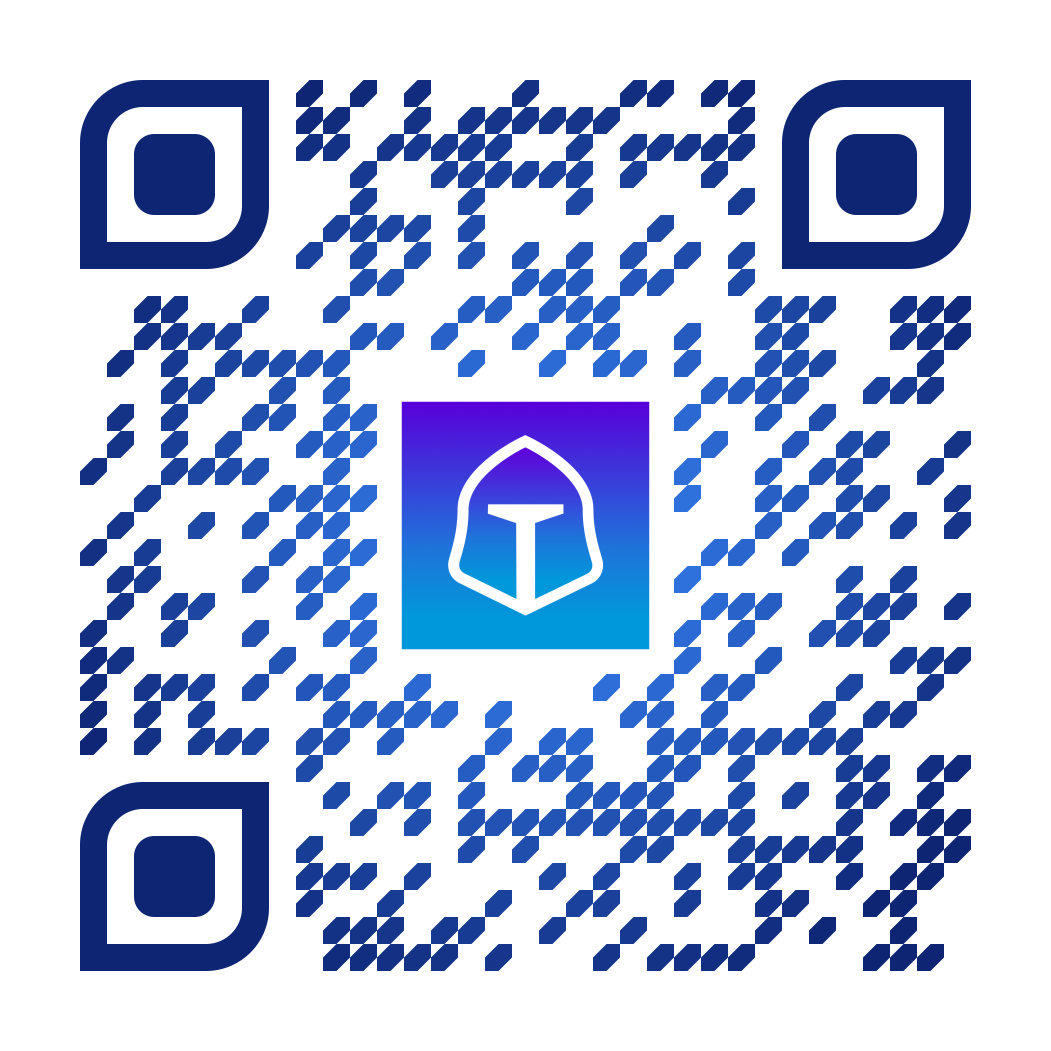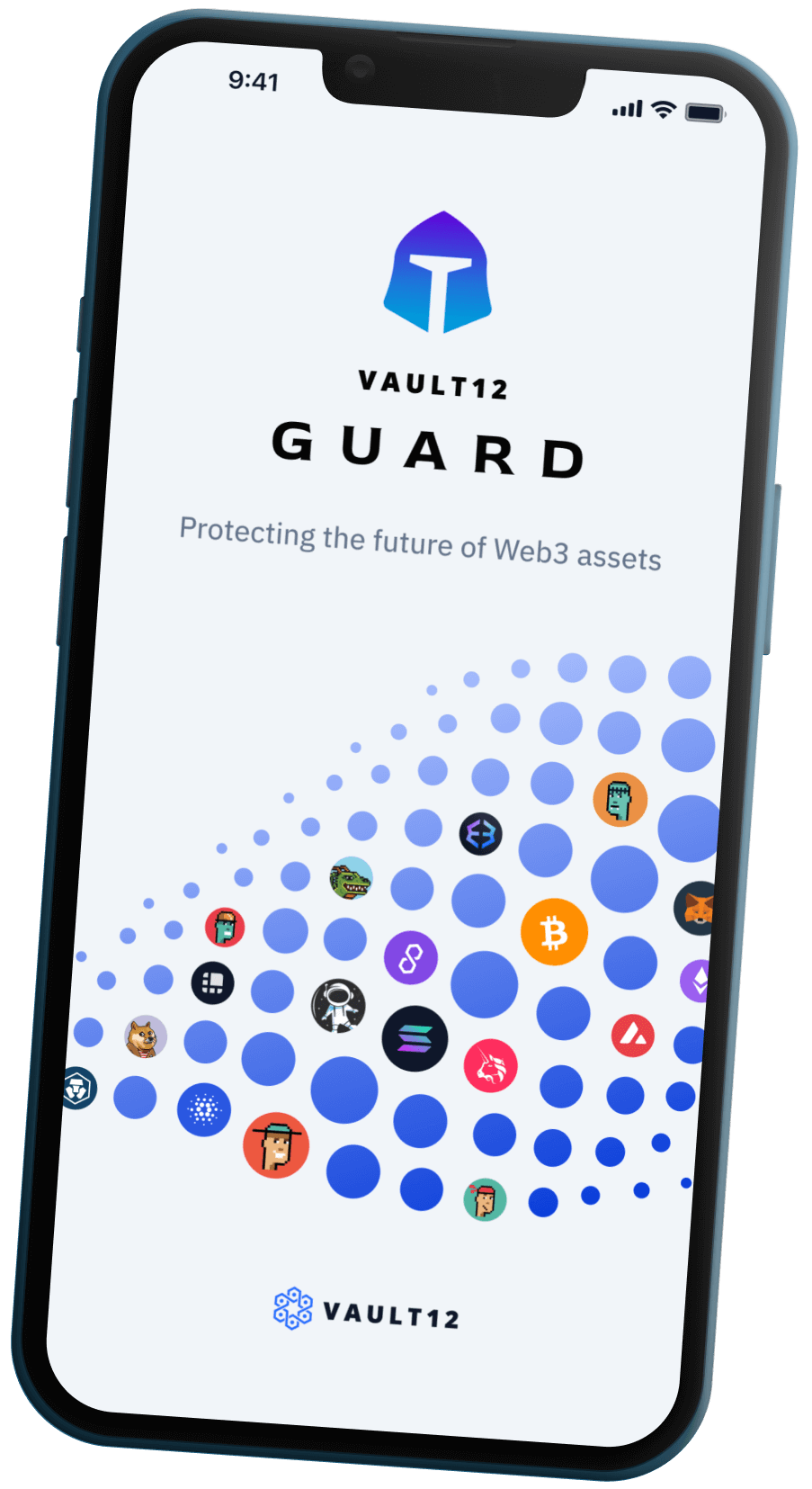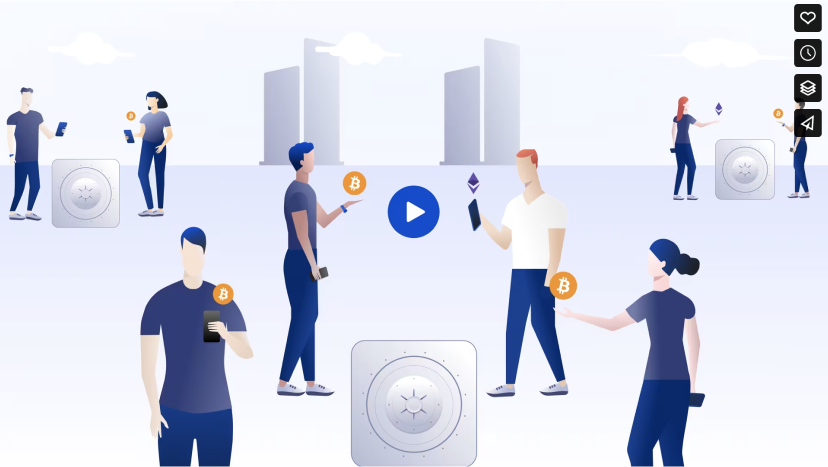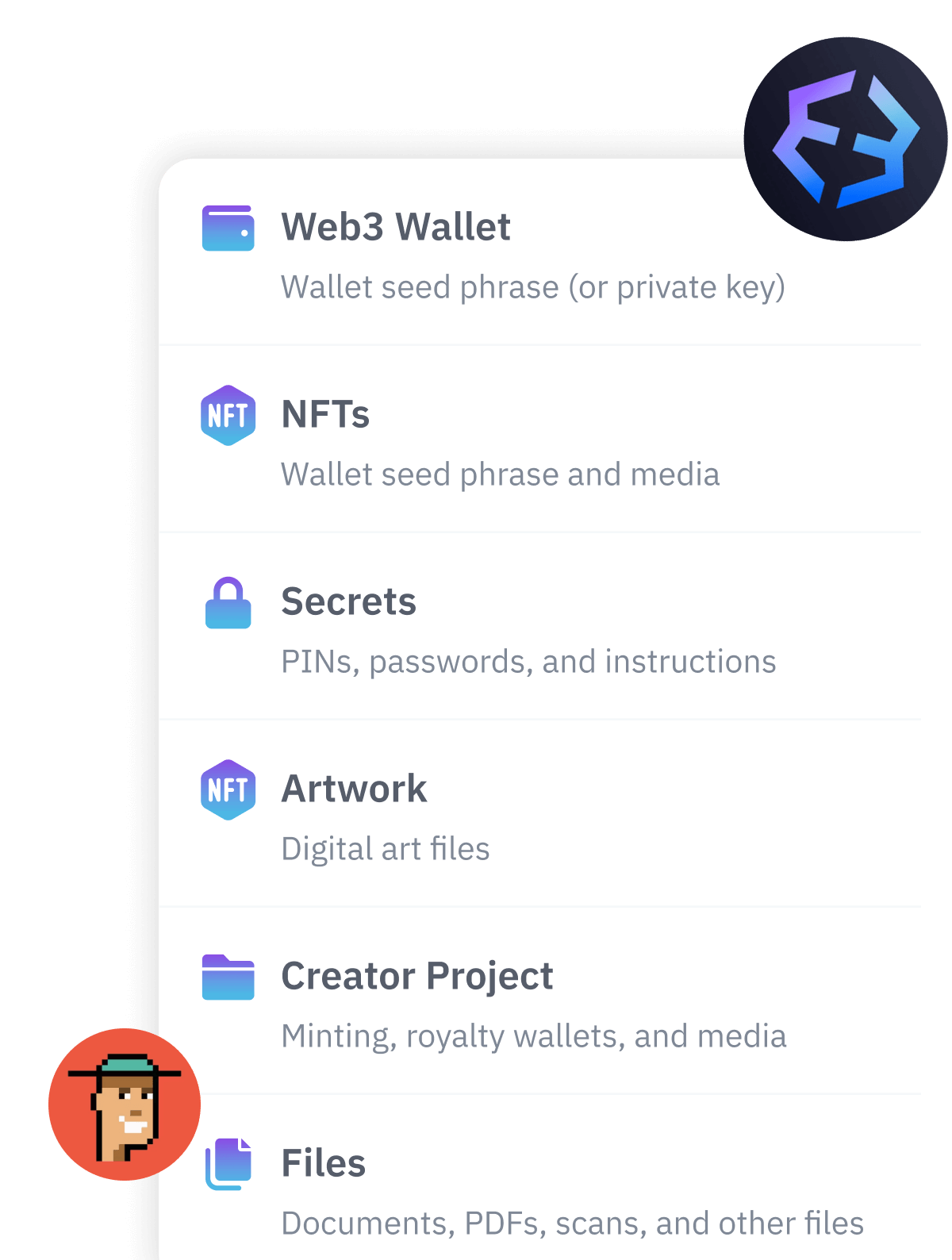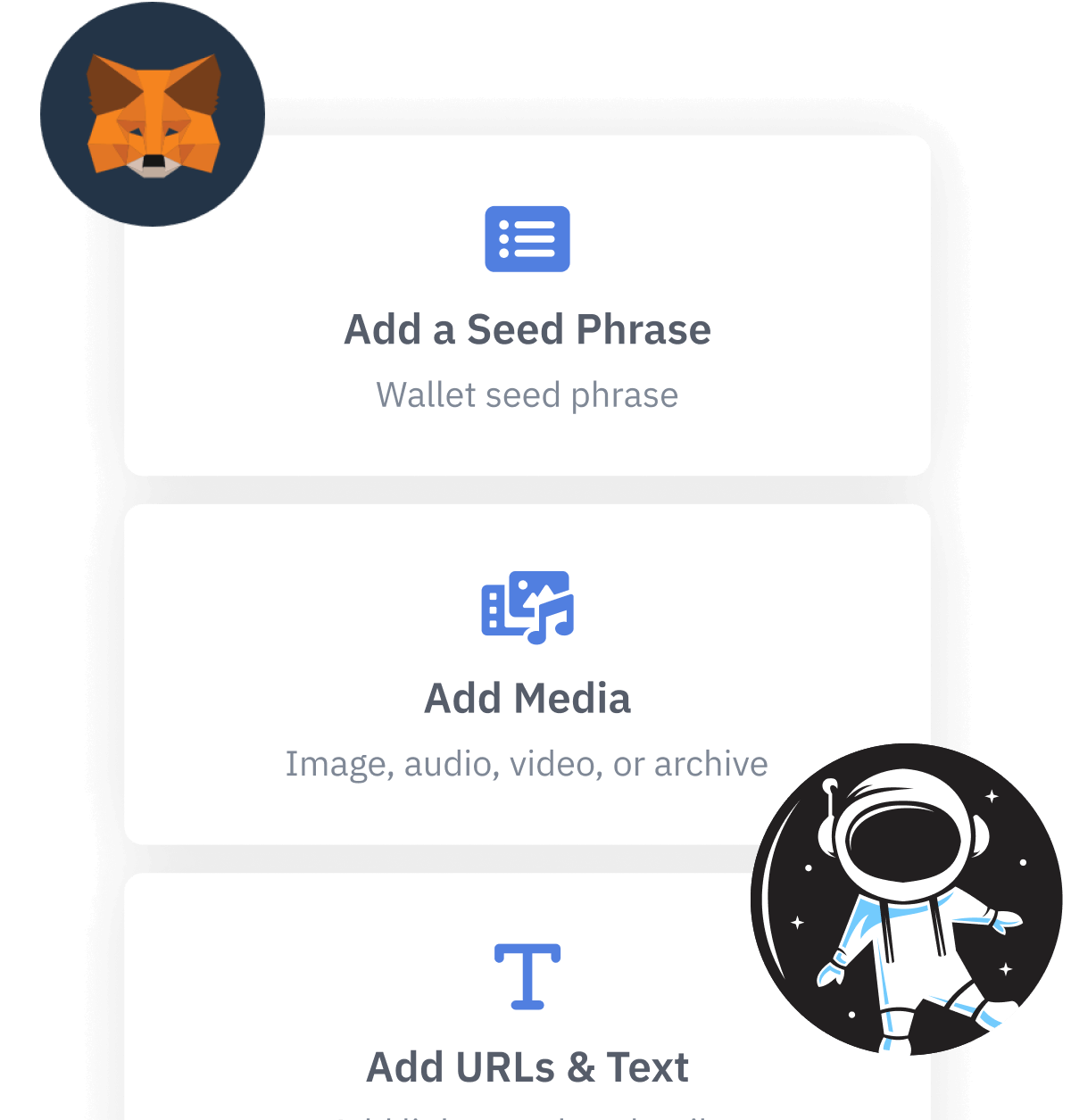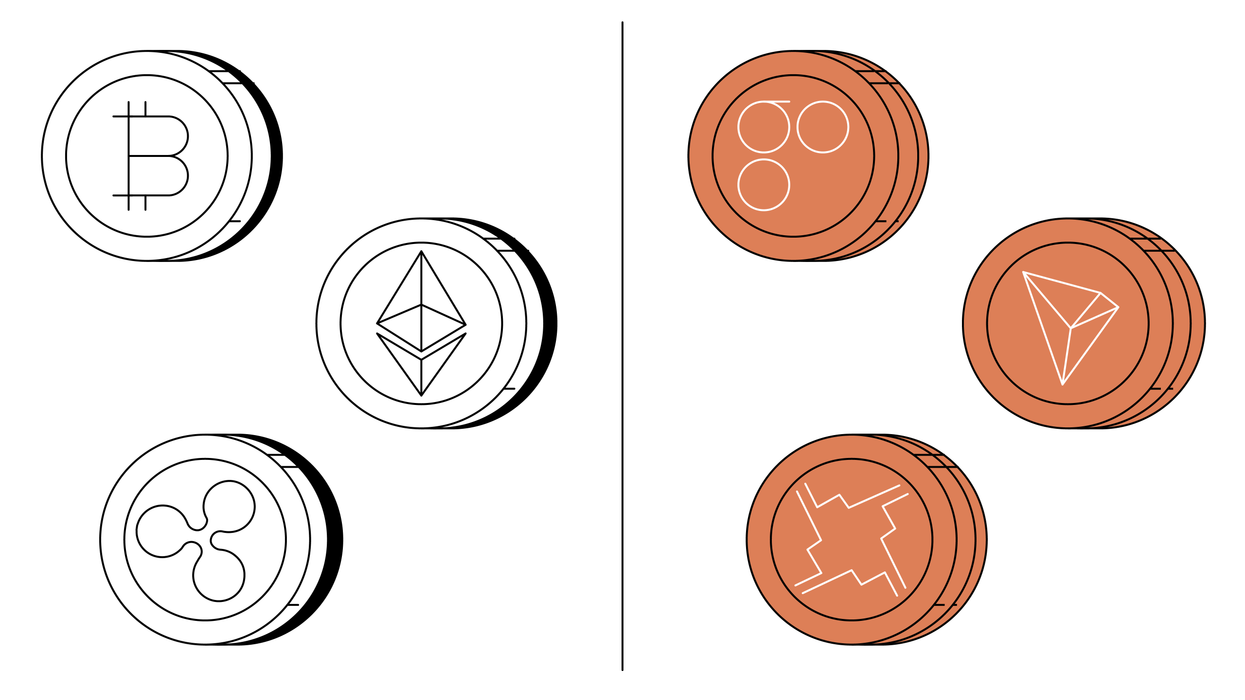
Digital Assets: Cryptocurrencies vs. Tokens
It’s important not to confuse the terms “cryptocurrencies” and “tokens,” as there are fundamental differences that distinguish them.
Summary
The two most common blockchain-based digital assets are cryptocurrencies and tokens. The biggest differentiation between the two is that cryptocurrencies have their own blockchains, whereas crypto tokens are built on an existing blockchainWhat Is a Digital Asset?
If you’re just starting out in blockchain and cryptocurrency, it’s essential to understand the difference between digital assets, cryptocurrencies, and tokens. While these terms are often used interchangeably, they are different in a number of key ways. Broadly speaking, a digital asset is a non-tangible asset that is created, traded, and stored in a digital format. In the context of blockchain, digital assets include cryptocurrency and crypto tokens.
Cryptocurrency and tokens are unique subclasses of digital assets that utilize cryptography, an advanced encryption technique that assures the authenticity of crypto assets by eradicating the possibility of counterfeiting or double-spending.
The key differentiation between the two classes of digital asset is that cryptocurrencies are the native asset of a blockchain — like BTC or ETH — whereas tokens are created as part of a platform that is built on an existing blockchain, like the many ERC-20 tokens that make up the Ethereum ecosystem.
What Is a Cryptocurrency?
A cryptocurrency is the native asset of a blockchain network that can be traded, utilized as a medium of exchange, and used as a store of value. A cryptocurrency is issued directly by the blockchain protocol on which it runs, which is why it is often referred to as a blockchain’s native currency. In many cases, cryptocurrencies are not only used to pay transaction fees on the network, but are also used to incentivize users to keep the cryptocurrency’s network secure.
Cryptocurrencies typically serve as a medium of exchange or store of value. A medium of exchange is an asset used to acquire goods or services. A store of value is an asset that can be held or exchanged for a fiat currency at a later date without incurring significant losses in terms of purchasing power.
Cryptocurrencies typically exhibit the following characteristics:
- Decentralized, or at least not reliant on a central issuing authority. Instead, cryptocurrencies rely on code to manage issuance and transactions.
- Built on a blockchain or other Distributed Ledger Technology (DLT), which allows participants to enforce the rules of the system in an automated, trustless fashion.
- Uses cryptography to secure the cryptocurrency’s underlying structure and network system.
What Is a Token?
Tokens — which can also be referred to as crypto tokens — are units of value that blockchain-based organizations or projects develop on top of existing blockchain networks. While they often share deep compatibility with the cryptocurrencies of that network, they are a wholly different digital asset class.
Cryptocurrencies are the native asset of a specific blockchain protocol, whereas tokens are created by platforms that build on top of those blockchains. For instance, the Ethereum blockchain’s native token is ether (ETH). While ether is the cryptocurrency native to the Ethereum blockchain, there are many other different tokens that also utilize the Ethereum blockchain. Crypto tokens built using Ethereum include DAI, LINK, COMP, and CryptoKitties, among others. These tokens can serve a multitude of functions on the platforms for which they are built, including participating in decentralized finance (DeFi) mechanisms, accessing platform-specific services, and even playing games.
There are several widely used token standards for creating crypto tokens, the majority of which have been built on top of Ethereum. The most widely used token standards are ERC-20, which allows the creation of tokens that can interoperate within Ethereum’s ecosystem of decentralized apps, and ERC-721, which was designed to enable non-fungible tokens that are individually unique and cannot be interchanged with other similar tokens. As of 2020, there are hundreds of different ERC-20 tokens and thousands of ERC-721 tokens in circulation. As new tokens are developed to address blockchain’s expanding use cases, the number of different tokens likely will continue to grow at a remarkable pace.
Typically, crypto tokens are programmable, permissionless, trustless, and transparent. Programmable simply means that they run on software protocols, which are composed of smart contracts that outline the features and functions of the token and the network’s rules of engagement. Permissionless means that anyone can participate in the system without the need for special credentials. Trustless means that no one central authority controls the system; instead it runs on the rules predefined by the network protocol. And finally, transparency implies that the rules of the protocol and its transactions are viewable and verifiable by all.
While crypto tokens, like cryptocurrency, can hold value and be exchanged, they can also be designed to represent physical assets or more traditional digital assets, or a certain utility or service. For instance, there are crypto tokens that represent tangible assets such as real estate and art, as well as intangible assets such as processing power or data storage space. Tokens are also frequently used as a governance mechanism for voting on specific parameters like protocol upgrades and other decisions that dictate the future direction of various blockchain projects. The process of creating crypto tokens to serve these various functions is known as tokenization.
As the blockchain industry continues to mature, the number of unique digital assets will only continue to grow in accordance to the multifaceted needs of all ecosystem participants ranging from enterprise partners to individual users. Given that creating new assets within the digital world is less restrictive than in the physical realm, these digital assets are widely expected to improve the way countless industries operate, interact, and generate value, thereby enabling a vast array of new social and economic possibilities.
Cryptopedia does not guarantee the reliability of the Site content and shall not be held liable for any errors, omissions, or inaccuracies. The opinions and views expressed in any Cryptopedia article are solely those of the author(s) and do not reflect the opinions of Gemini or its management. The information provided on the Site is for informational purposes only, and it does not constitute an endorsement of any of the products and services discussed or investment, financial, or trading advice. A qualified professional should be consulted prior to making financial decisions. Please visit our Cryptopedia Site Policy to learn more.
Digital Assets: Cryptocurrencies vs. Tokens
It’s important not to confuse the terms “cryptocurrencies” and “tokens,” as there are fundamental differences that distinguish them.

Gemini Cryptopedia
Gemini is a next generation cryptocurrency exchange and custodian that allows customers to buy, sell, and store digital assets.
You will lose your Bitcoin and other crypto when you die...
...unless you set up Crypto Inheritance today.
It's simple — if you don't worry about crypto inheritance, nobody else will — not your software or hardware wallet vendors, not your exchanges, and not your wealth managers. So it's up to you to think about how to protect the generational wealth you have created, and reduce the risks around passing that crypto wealth on to your family and heirs. What are the challenges with crypto inheritance?
- Crypto Wallets are difficult to use and do not offer crypto inheritance management. In fact, most of them tell you to write down your seed phrase on a piece of paper, which is practically useless.
- Some people back up their wallet seed phrases or private keys on paper, local devices like hardware wallets or USBs, or in the cloud. All of these options have severe drawbacks that range from hacking to accidental loss to disrupted cloud services.
- Software wallets operate on specific blockchains, yet your crypto assets span multiple blockchains. For inheritance to work, you must be able to manage inheritance across every blockchain — now and forever.
DISCLAIMER: Vault12 is NOT a financial institution, cryptocurrency exchange, wallet provider, or custodian. We do NOT hold, transfer, manage, or have access to any user funds, tokens, cryptocurrencies, or digital assets. Vault12 is exclusively a non-custodial information security and backup tool that helps users securely store their own wallet seed phrases and private keys. We provide no financial services, asset management, transaction capabilities, or investment advice. Users maintain complete control of their assets at all times.
Pioneering Crypto Inheritance: Secure Quantum-safe Storage and Backup
Vault12 is the pioneer in Crypto Inheritance, offering a simple yet powerful way to designate a legacy contact and pass on your crypto assets—like Bitcoin (BTC), Ethereum (ETH) and Solana (SOL) —to future generations. Built for everyday users yet robust enough for the most seasoned crypto enthusiasts, Vault12 Guard ensures your wallet seed phrases and private keys are preserved in a fully self-sovereign manner, across all Blockchains.
At the heart of Vault12 Guard is quantum-resistant cryptography and a decentralized, peer-to-peer network of trusted Guardians. Your critical information is never stored in the cloud, on Vault12 servers, or even on local devices—dramatically reducing the risk of a single point of failure. By fusing a powerful software layer with the Secure Element of iOS devices (Secure Enclave) and Google devices (Strongbox), Vault12 Guard locks down your private keys against present and future threats.
Our innovative approach harnesses social recovery, enabling you to appoint one or more trusted individuals or mobile devices as Guardians. These Guardians collectively safeguard your protected seed phrases in a decentralized digital Vault—so there’s no need for constant lawyer updates or bulky paperwork. Should the unexpected happen, your chosen legacy contact can seamlessly inherit your crypto assets without compromising your privacy or security.
Preserve your digital wealth for generations to come with Vault12 Guard—the simplest, most secure way to manage crypto inheritance and backup.
Take the first step and back up your crypto wallets.
Designed to be used alongside traditional hardware and software crypto wallets, Vault12 Guard helps cryptocurrency owners back up their wallet seed phrases and private keys (assets) without storing anything in the cloud, or in any single location. This increases protection and decreases the risk of loss.
The first step in crypto Inheritance Management is making sure you have an up-to-date backup.
The Vault12 Guard app enables secure decentralized backups, and provides inheritance for all your seed phrases and private keys across any blockchain, including Bitcoin, Ethereum, and others, and for any crypto wallet.
Note: For anyone unfamiliar with cryptocurrencies, Vault12 refers to wallet seed phrases and private keys as assets, crypto assets, and digital assets. The Vault12 Guard app includes a software wallet that works alongside your Digital Vault. The primary purpose of this is to guard your Bitcoin (BTC) and Ethereum (ETH) wallet seed phrases, private keys, and other essential data, now and for future generations.

